Imagine digging up a piece of earth and discovering a secret that’s been sleeping for millions of years. In 2024, the Argentinian Patagonia delivered such a jaw-dropping surprise: the fossilized remains of a never-before-seen saber-toothed feline. For big cat lovers, this is like finding a lost chapter in nature’s wildest story—one filled with power, beauty, and mystery.
The First Glimpse: A Jaw to Remember

The fossil’s most captivating feature is its elongated, curved canine teeth—sleek and menacing like nature’s own daggers. These formidable fangs, likely gleaming under ancient sunlight, gave the creature an unforgettable and almost theatrical presence. They weren’t just tools for hunting, but bold declarations of dominance, etched into bone. The fearsome grin they formed would have been a haunting signal to any would-be prey—beauty and danger fused in a single, deadly expression. It’s a glimpse into a predator that ruled not just with force, but with flair.
Paws Built for Pouncing

Paleontologists were astonished by the sheer size and intricate design of the creature’s paws. Broad and cushioned, they suggest an animal built for stealth—able to move through its environment with ghost-like silence. The hooked claws added a deadly precision, ideal for gripping prey during sudden, high-powered ambushes. These paws weren’t just limbs; they were finely tuned weapons of a predator built for both patience and power. Their structure reveals a hunter that relied on both agility and strategy to dominate its ecosystem.
Eyes Like Burning Embers

The skull’s pronounced eye sockets suggest the presence of large, forward-facing eyes—an evolutionary trait often linked to sharp depth perception and predatory focus. One can almost picture those eyes glowing softly in the twilight, scanning every shadow with unnerving precision. Their position implies binocular vision, ideal for tracking swift movements and judging distances in dense, tangled terrain. Such eyes would have made the creature a relentless stalker, equally skilled at navigating the darkness as it was at striking with accuracy. They weren’t just organs of sight—they were instruments of survival and dominance.
Muscle and Grace Combined
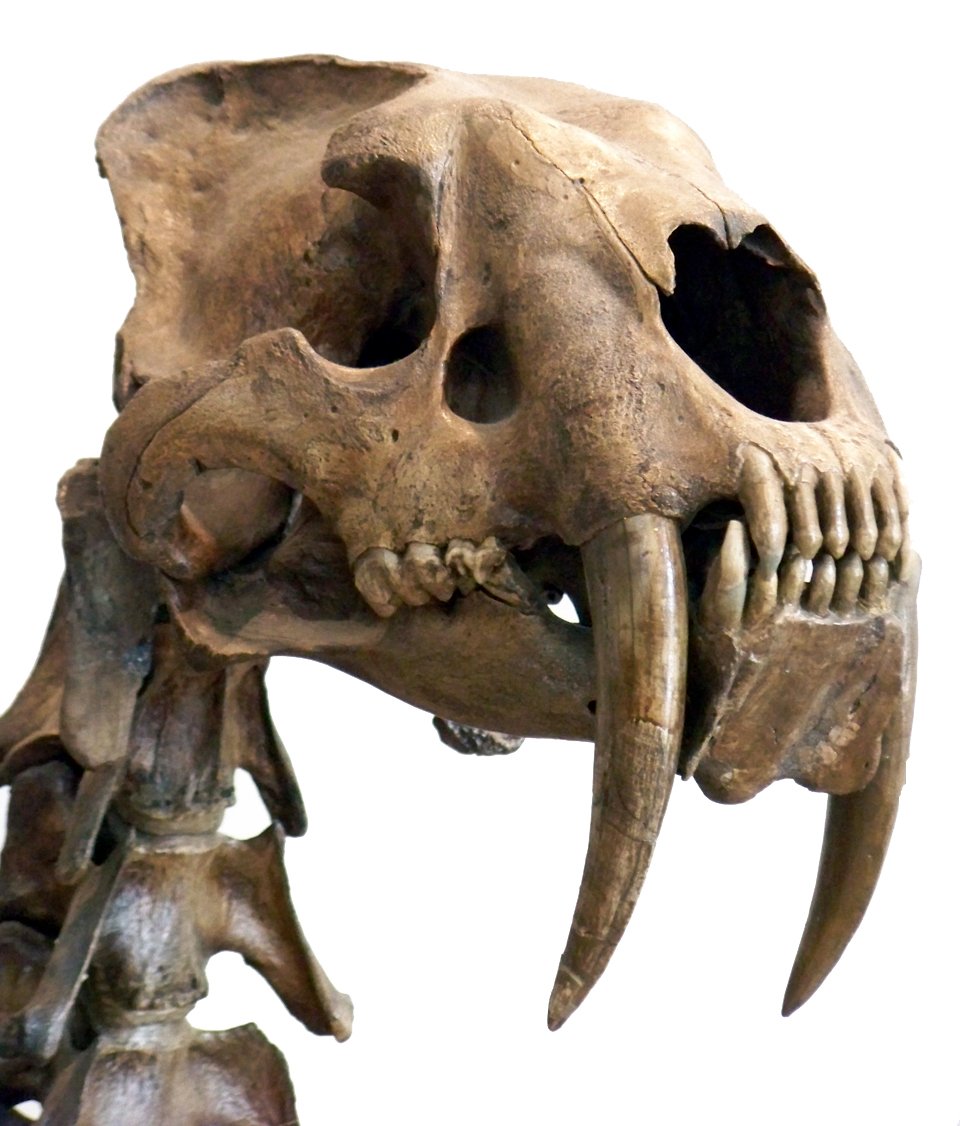
Judging by the bones, this saber-tooth was far more than a mere powerhouse—it was a masterful blend of strength and finesse. Its frame reveals a creature sculpted for both speed and precision, with sinewy muscles layered over a structure built for agile movement. Likely capable of weaving through dense forests with near-silent, balletic grace, it could shift from stealth to explosive power in an instant. This unique combination of agility and raw force would have made it a formidable predator, capable of chasing, ambushing, and overpowering even the largest of prey. It was a predator engineered not just to survive, but to dominate its world with elegance and efficiency.
Patterns in the Past: Fur Coat Mysteries

Though fur doesn’t fossilize, scientists infer from its habitat and relatives that this saber-tooth likely wore a dappled or striped coat, reminiscent of modern jaguars or tigers. These natural patterns would have served as exceptional camouflage, allowing it to melt into the shifting light and shadows of prehistoric forests. The interplay of spots or stripes with the sun-dappled undergrowth would have made the predator nearly invisible until it was too late for its prey. This adaptive advantage suggests a creature not only built for power, but also for tactical invisibility. In its world, stealth was just as deadly as strength.
The Saber’s Bite: Deadly Precision
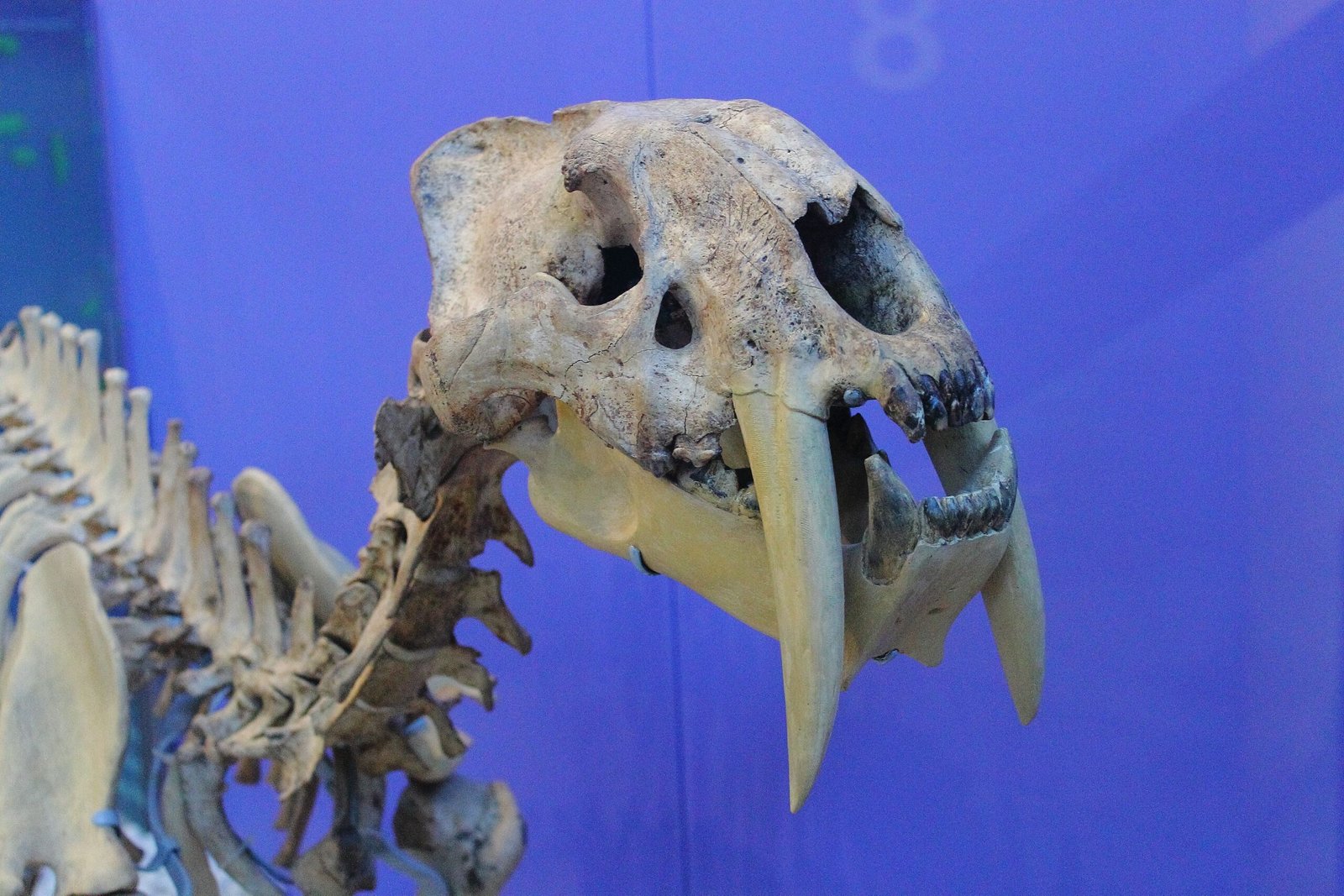
That iconic saber-toothed bite was far more than a dramatic flourish—it was a lethal adaptation perfected by evolution. Backed by immense neck muscles and an extraordinarily wide jaw, each bite delivered precise, bone-splitting force in a matter of seconds. These fangs weren’t meant for prolonged struggles, but for swift, targeted kills—nature’s equivalent of a scalpel with brute force behind it. The saber teeth, combined with muscular coordination, made this predator a master of quick, efficient takedowns. It was a weapon system designed not just to kill, but to kill with chilling precision.
Emotional Intelligence in the Wild
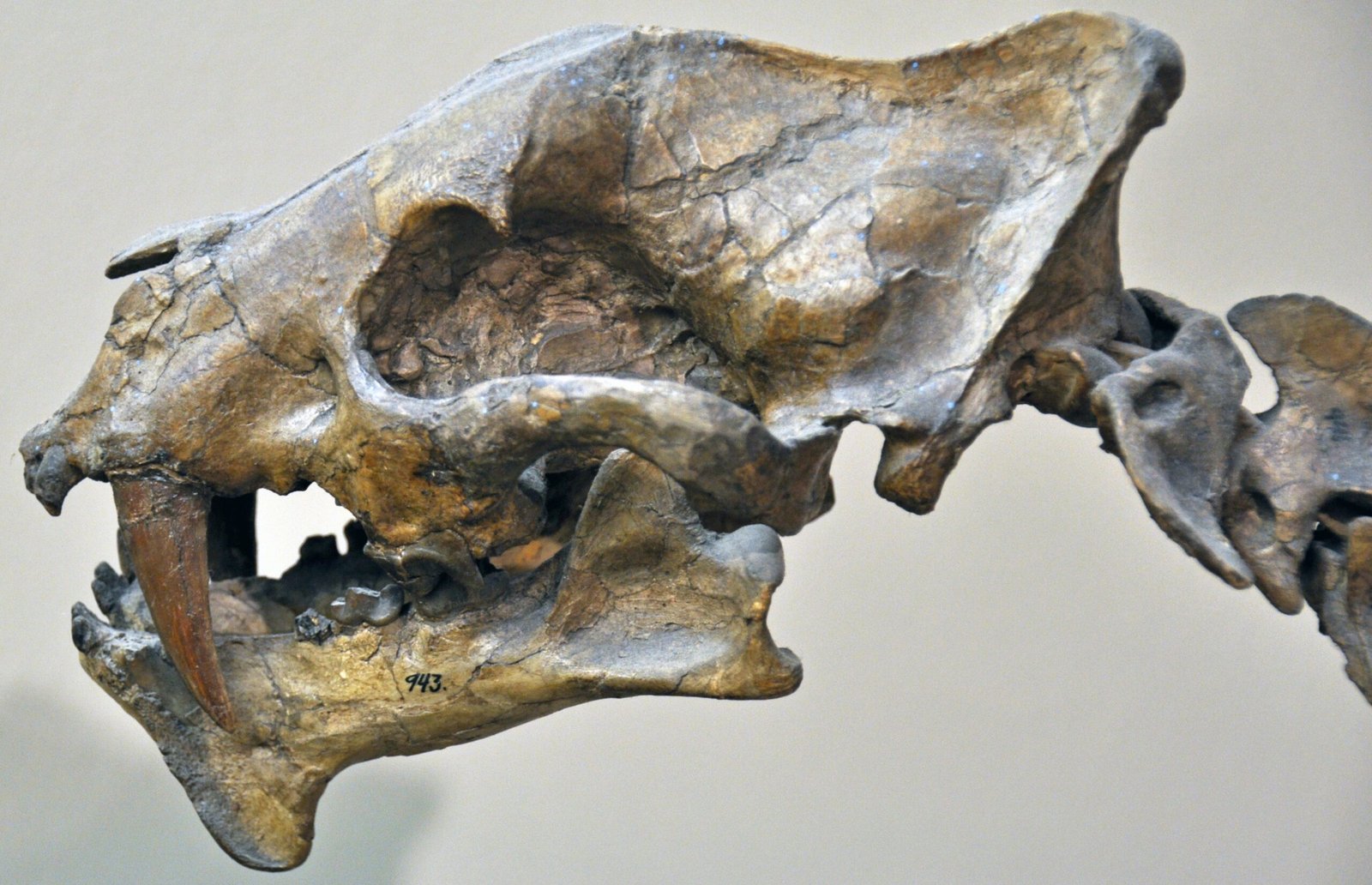
Fossilized skulls reveal ample space for a sizable brain, hinting at a creature equipped with keen instincts and complex behaviors. This wasn’t just a brute predator—it likely possessed sharp awareness and adaptability, essential for survival in a dynamic ecosystem. Much like today’s big cats, it may have displayed a range of emotions: curiosity when stalking, calculated cunning during hunts, and even flashes of playfulness when at rest in the safety of its territory. Its intelligence would have been a vital complement to its physical prowess. In this saber-tooth, brains and brawn coexisted in powerful harmony.
Roaming the Ancient Patagonian Wilds
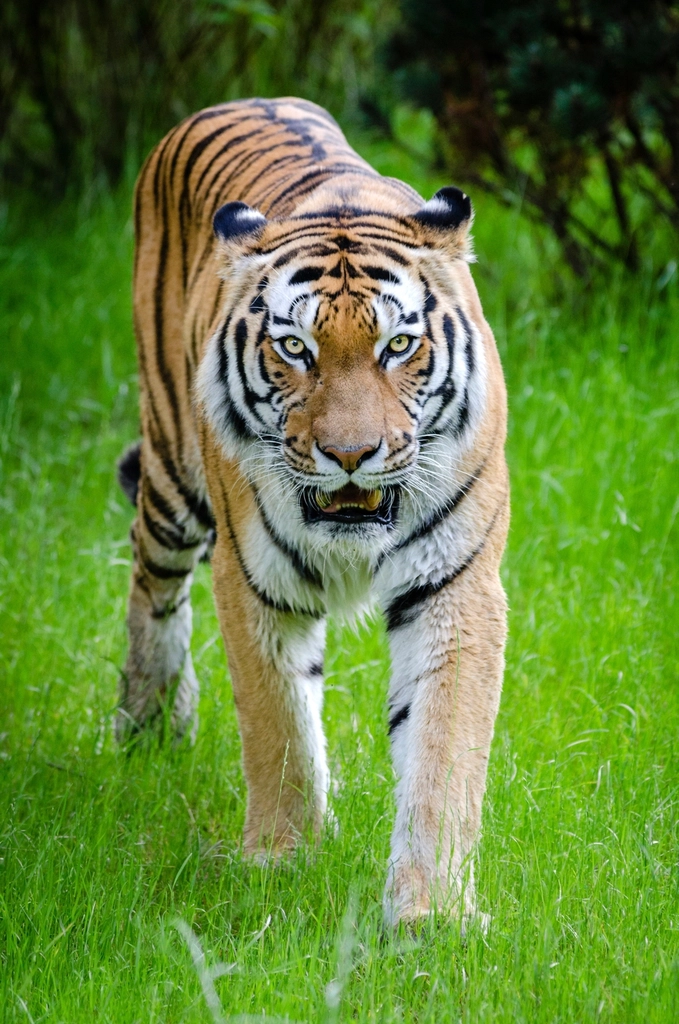
Long ago, Patagonia was a dramatic mosaic of dense forests, sweeping plains, and shifting seasons—a land both beautiful and brutal. This new saber-tooth thrived across that varied terrain, moving with ease between shadowy woodlands and open grasslands in pursuit of prey. Its adaptability speaks volumes, marking it as a resilient predator capable of navigating climate changes and ecological upheaval. In a world dominated by towering herbivores and fierce competitors, it carved out its own niche with stealth, strength, and strategy. It wasn’t just a hunter—it was a survivor shaped by a wild, untamed Patagonia.
Family Ties: A Social Predator?

Recent analysis of tooth wear patterns offers an intriguing clue: this saber-tooth may not have been a solitary killer. The distribution of wear suggests possible food sharing, hinting at cooperative behavior more complex than previously assumed. Could these formidable predators have hunted in small family groups, coordinated attacks, and raised their young together? It’s a tantalizing possibility—one that mirrors the social dynamics of today’s lions and challenges our assumptions about ancient big cats. If true, it paints a richer, more nuanced portrait of their lives—where strength was amplified by social bonds.
The Power of Silence
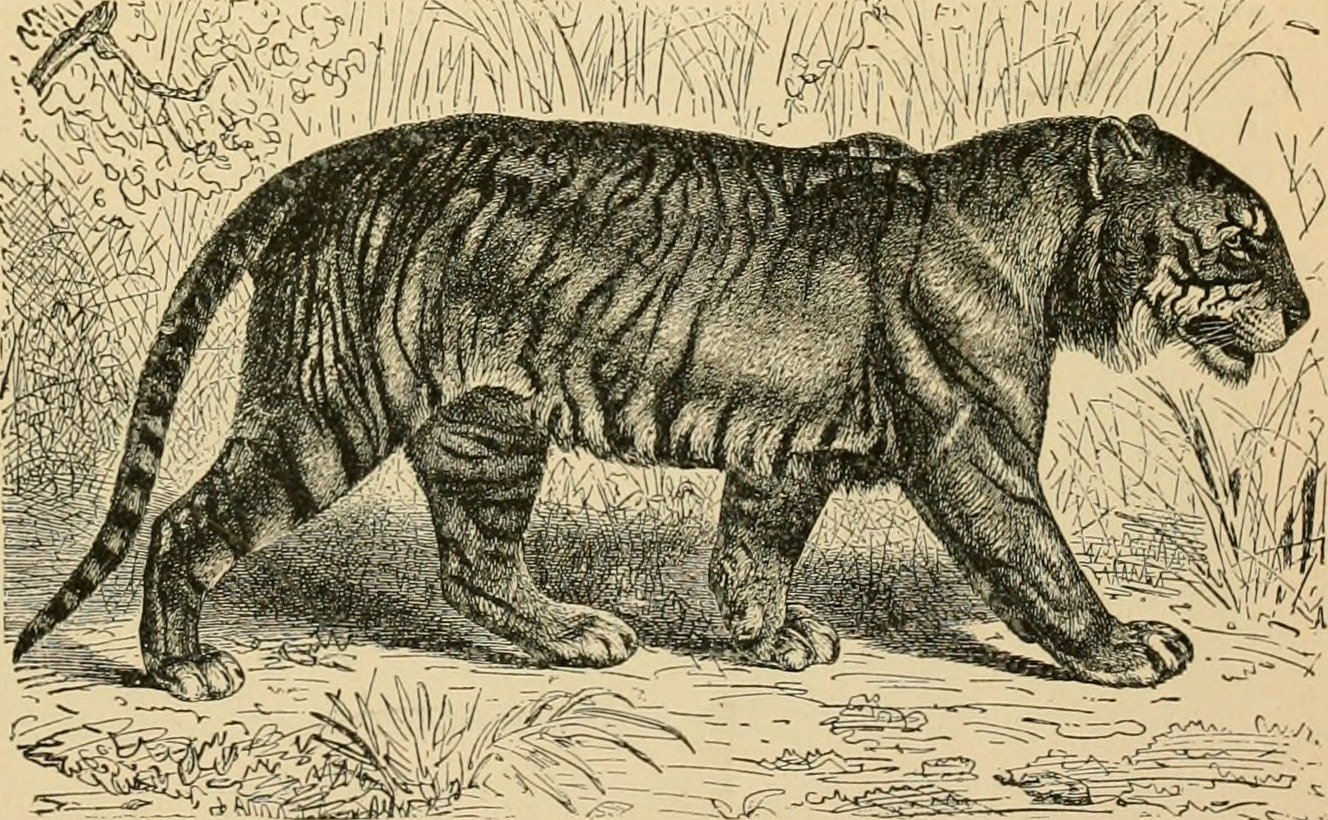
Much like the house cats we know today, this ancient feline likely moved with an eerie, near-silent grace. Its soft, padded feet would have muffled each step, allowing it to glide undetected through tall grasses and dense underbrush. This stealth wasn’t just a bonus—it was a crucial tool for both stalking prey and avoiding larger threats. Every movement was calculated, quiet, and precise, making it a ghostly presence in its environment. In the stillness of prehistoric dawns and dusks, it would have been more felt than seen.
Whiskers at Work

Faint impressions along the skull point to the presence of thick, highly sensitive whiskers—an ancient feline’s built-in radar. These tactile sensors would have been essential for navigating low-light conditions, detecting subtle movements, or gauging spaces too tight for the eyes alone. In the dark, when vision faltered, the whiskers stepped in, reading vibrations in the air and brushing against obstacles with surgical precision. They even allowed the cat to sense changes in wind direction—perfect for stalking without giving away its position. Quiet and invisible, these whiskers were the ultimate secret weapon in the saber-tooth’s hunting arsenal.
Cubs in the Shadows

Nearby, small fossilized teeth offer a heartwarming clue—evidence that cubs once roamed this ancient terrain. It’s easy to imagine tiny, wide-eyed kittens trailing after their mother, absorbing every movement with instinctive curiosity. In the quiet hours of prehistoric dusk, they may have tumbled through ferns and tall grass, play-fighting and clumsily mimicking the deadly pounce they would one day perfect. These early moments weren’t just adorable—they were vital lessons in survival. Even in a world ruled by giants, family and learning played a crucial role in shaping the next generation of predators.
Fangs and Fears: Defending Its Domain
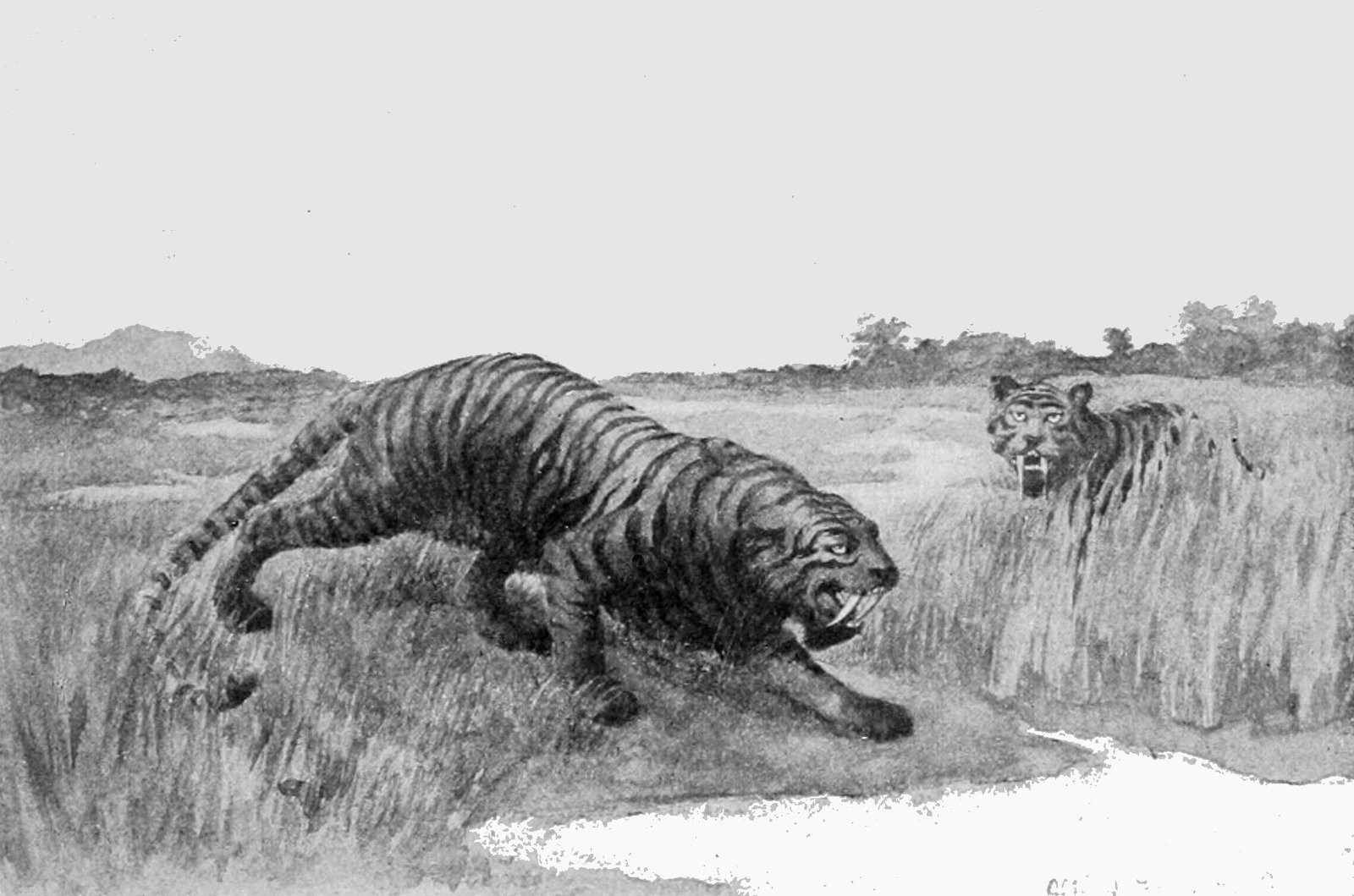
Those iconic saber teeth weren’t solely tools for the kill—they were also bold statements of power. With a single snarl and the flash of those gleaming fangs, this cat could intimidate rivals without lifting a paw. The sheer size and visibility of its teeth acted as a natural deterrent, signaling strength, confidence, and dominance over territory. In a world teeming with fierce competition, intimidation was often as effective as combat. Sometimes, survival depended not on the fight—but on making sure it never had to happen.
The Art of Camouflage

In the dense, dappled light of prehistoric forests, blending in wasn’t just an advantage—it was essential for survival. The cat’s likely patterned coat, paired with its fluid, silent movements, rendered it a ghost among the trees. Every shadow became its ally, every rustle a potential ambush. Prey would have had only seconds to react—often far too late—once those watchful eyes locked on. This predator didn’t chase; it vanished, waited, and struck when the forest itself seemed to come alive.
Echoes of Extinction

The saber-tooth’s disappearance is still shrouded in mystery, a haunting echo from a vanished world. Climate shifts may have altered its habitat, while dwindling prey or rising competition—perhaps even from early humans—could have pushed it to the brink. It’s possible that a perfect storm of pressures slowly unraveled its dominance. Whatever the cause, the once-mighty predator left behind only bones, scattered clues, and unanswered questions. Its extinction reminds us how even the fiercest creatures can be undone by the changing tides of time.
Linking Past and Present

Modern big cats—tigers, leopards, jaguars—still carry the legacy of their ancient saber-toothed kin. In their silent stalks, powerful leaps, and piercing stares, we catch fleeting glimpses of a predator long gone. Each whisker twitch, low purr, or tense crouch is like a faint echo from deep time, a living reminder of the beauty and ferocity that once roamed prehistoric landscapes. Though the saber-tooth has vanished, its spirit lingers in the elegance and strength of today’s wild felines. In them, the ancient world still breathes.
Guardians of Genetic Memory
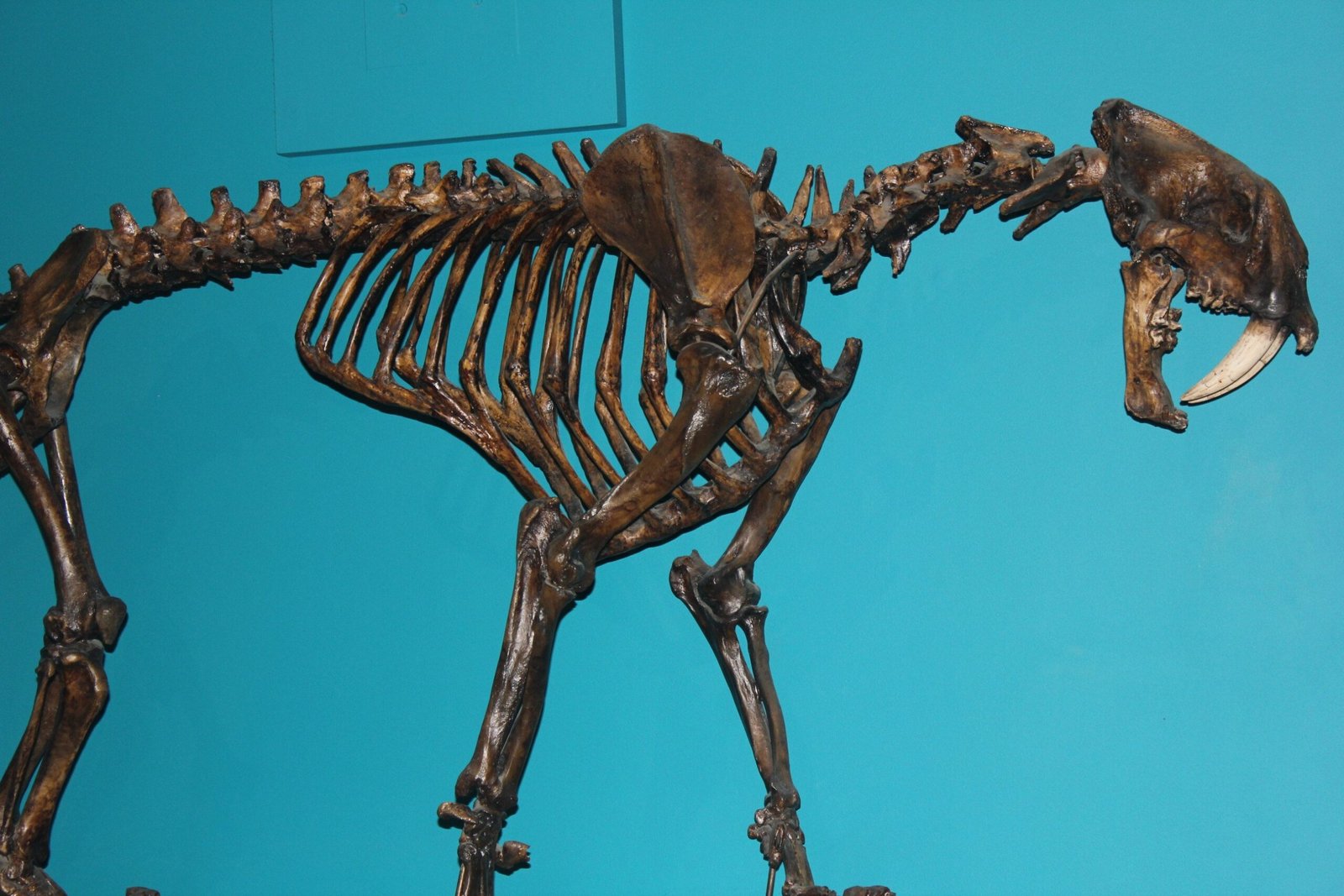
This remarkable discovery serves as a powerful reminder of how fragile and irreplaceable wild felines truly are. Each species is a unique chapter in nature’s vast, unfolding story—full of wonder, wisdom, and ancient ties to the past. When even one is lost, it’s as if a page is torn from that living book, never to be written again. The silence left behind echoes louder than any roar, a quiet void where life once thrived. Protecting today’s wild cats means preserving a legacy millions of years in the making.
A Dance with Giants
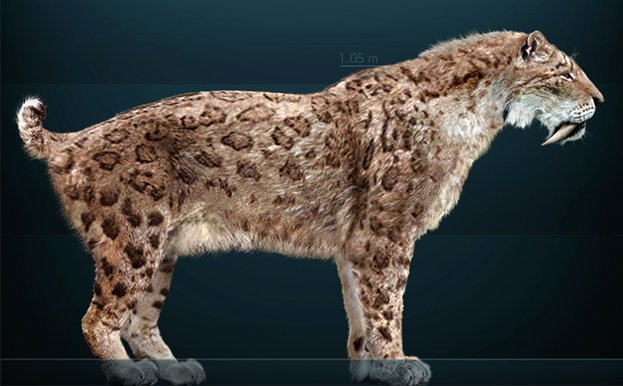
This saber-tooth prowled a world teeming with giants—massive herbivores with crushing strength and towering, sharp-beaked birds that ruled the skies and open ground. Every hunt it undertook was a high-stakes dance of precision, patience, and raw courage. One misstep could mean injury or death, forcing the predator to rely not just on power, but on instinct and strategy. Its survival in such a perilous ecosystem speaks to its extraordinary skill. The ancient world wasn’t just wild—it was a breathtaking arena of danger and drama, every bit as thrilling as today’s fiercest jungles.
Lessons from the Lost

Every fossil unearthed tells a deeper story of resilience, adaptation, and the relentless march of change. The saber-tooth’s bones speak of a creature that once thrived, evolved, and eventually vanished—reminding us how delicate even the most powerful lives can be. Its legacy challenges us not just to marvel at the past, but to safeguard the wild wonders that still roam the Earth today. These living creatures are more than survivors—they’re threads in a vast, ancient tapestry still being woven. To lose them would be to silence stories we’ve yet to fully understand.
Inspiring Awe and Wonder
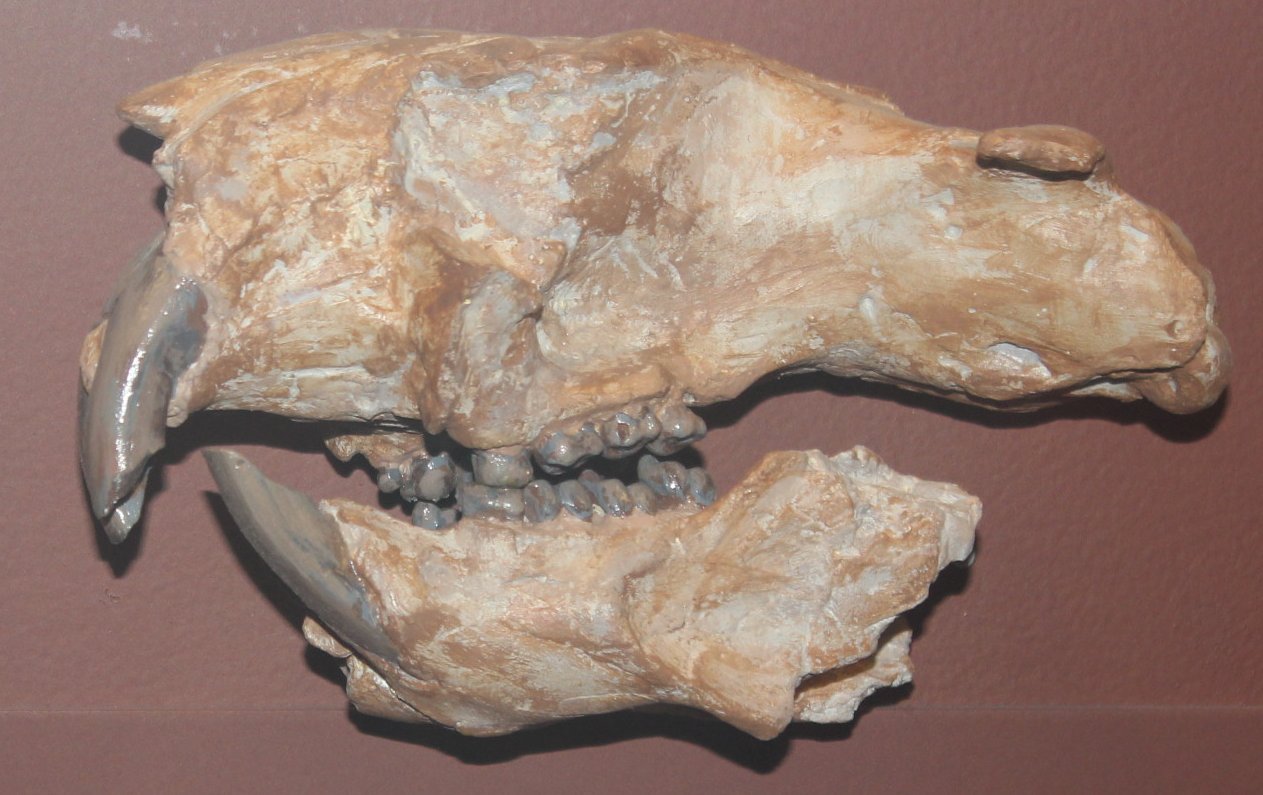
There’s something profoundly stirring about holding a fossilized tooth in your hand—a tangible fragment of a life that once moved, hunted, and lived beneath ancient skies. That single tooth, hardened by time, bridges the immense gulf between our present and a world long gone. It belonged to a creature with instincts, strength, and purpose, now preserved in stone yet still whispering its story. In that moment, you’re not just holding a fossil—you’re touching deep time, connected across millions of years. It’s a quiet, humbling reminder of our place in nature’s vast and unfolding history.
The Roar That Still Echoes

Though the saber-tooth’s roar has long faded into silence, its spirit endures—in every fierce feline gaze, every silent stalk through grass, and every untamed corner of the natural world. Its legacy lives on not just in bones, but in the elegance and power of today’s wild cats. It stands as a testament to nature’s boundless imagination, shaping creatures of beauty, strength, and precision. In remembering the saber-tooth, we honor a lineage of survival and adaptation that still prowls the Earth. Its story reminds us that nature never stops dreaming.
Every Cat Has a Story

From the tiniest house kitten curling up in a sunbeam to the mightiest jungle cat prowling the shadows, every feline is a living thread in this grand, ancient tapestry. It’s a tale woven with resilience, instinct, and the quiet mystery that has always set cats apart. Across continents and millennia, they’ve adapted, endured, and captivated us with their grace and power. Each one carries echoes of those that came before—like the saber-tooth—reminding us that this story of survival and beauty is still unfolding. And we are lucky enough to witness it.
The Conservation Call

This discovery is more than a glimpse into the past—it’s a powerful wake-up call. If we fail to protect today’s wild cats, future generations may know them only through bones and museum displays, just as we know the saber-tooth. Their survival depends on the choices we make now, from preserving habitats to combating climate change and illegal trade. Every action, no matter how small, ripples forward—shaping the future of these magnificent creatures. Protecting them isn’t just about conservation; it’s about honoring life, legacy, and the wild beauty we still have the chance to save.
Unlocking Ancient Secrets

Each new fossil find is like opening a timeworn treasure chest, filled not with gold, but with stories etched in bone. Every fragment uncovered deepens our understanding while reminding us how much still lies buried, waiting in silence. These ancient clues spark wonder and questions in equal measure, urging us to keep exploring. It’s a journey guided by curiosity, patience, and reverence for the Earth’s deep history. And it’s often the gentle hands and open hearts of scientists, dreamers, and explorers that bring these long-lost voices back into the light.

Suhail Ahmed is a passionate digital professional and nature enthusiast with over 8 years of experience in content strategy, SEO, web development, and digital operations. Alongside his freelance journey, Suhail actively contributes to nature and wildlife platforms like Feline Fam, where he channels his curiosity for the Feline into engaging, educational storytelling.
With a strong background in managing digital ecosystems — from ecommerce stores and WordPress websites to social media and automation — Suhail merges technical precision with creative insight. His content reflects a rare balance: SEO-friendly yet deeply human, data-informed yet emotionally resonant.
Driven by a love for discovery and storytelling, Suhail believes in using digital platforms to amplify causes that matter — especially those protecting Earth’s biodiversity and inspiring sustainable living. Whether he’s managing online projects or crafting wildlife content, his goal remains the same: to inform, inspire, and leave a positive digital footprint.






